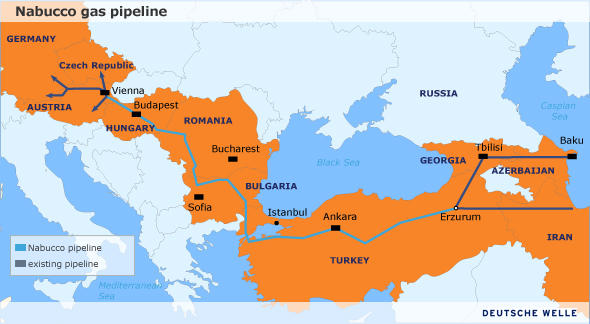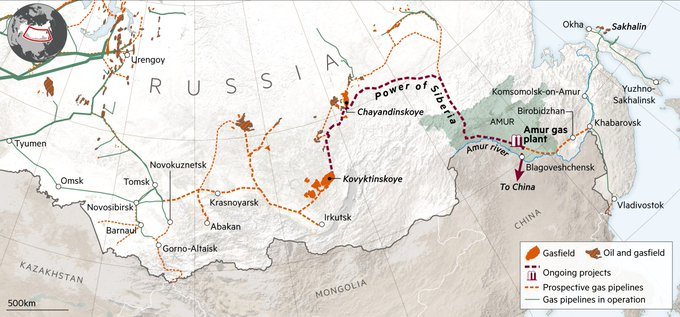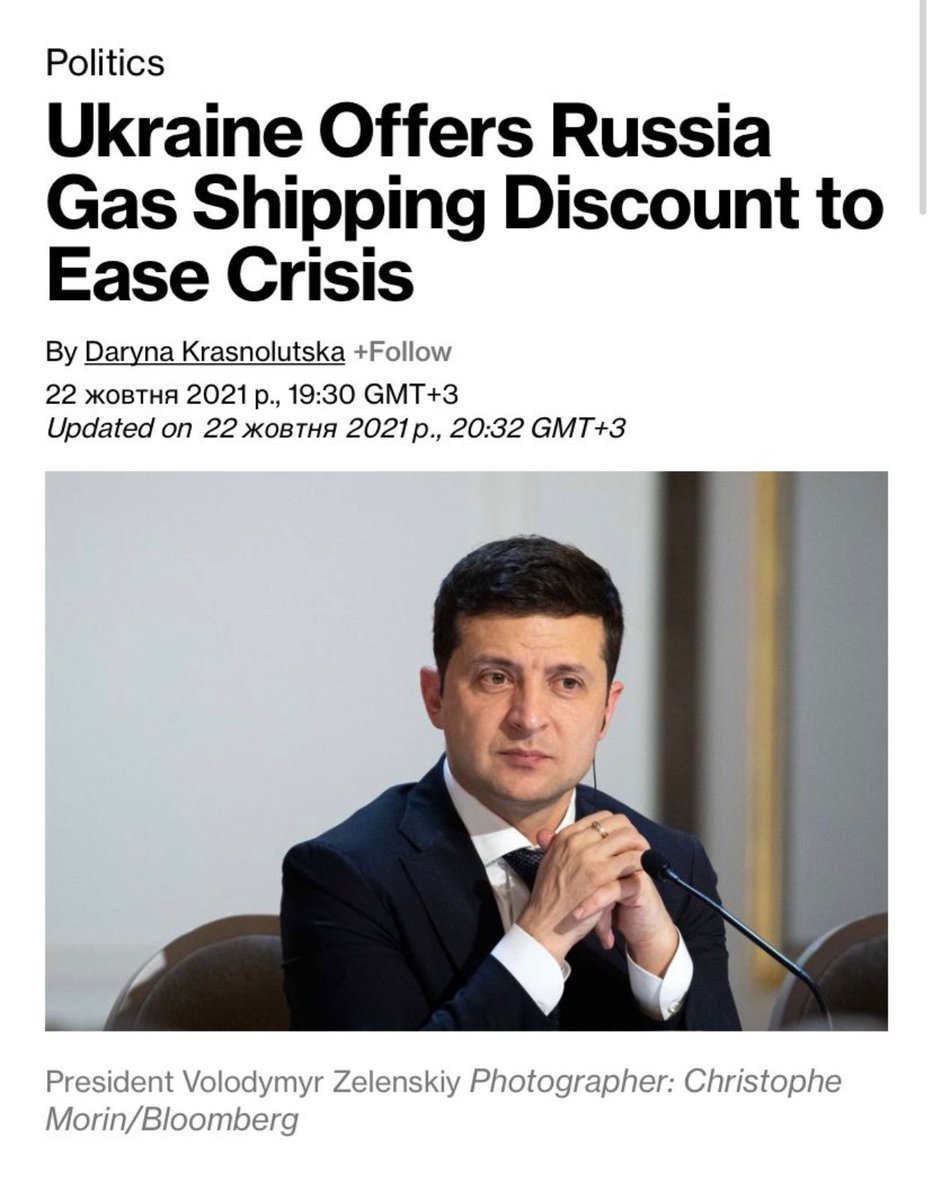It's time for a big thread 🧵 about the global triple crisis in fuel, food and fertilizers.
When it started, how it continues, and what lies ahead amid Russia's war on Ukraine in Europe and the growing Sino-American bifurcation of the global system. #realpolitik #geoeconomics
When it started, how it continues, and what lies ahead amid Russia's war on Ukraine in Europe and the growing Sino-American bifurcation of the global system. #realpolitik #geoeconomics
Food comes first.
@yaneerbaryam is the complex systems scientist who predicted the Arab Spring by indicating in his research in early 2011 that widespread violence would occur if skyrocketing global food prices (surging Food Price Index) were not reduced. vice.com/en/article/43y…
@yaneerbaryam is the complex systems scientist who predicted the Arab Spring by indicating in his research in early 2011 that widespread violence would occur if skyrocketing global food prices (surging Food Price Index) were not reduced. vice.com/en/article/43y…

US policies on ethanol which means a huge amount of US corn is used to power cars rather than food & commodity market deregulation in late 90s were major cause of skyrocketing food prices. The peaks in the Food Price Index were the triggers of the food riots and the Arab Spring.
Based on @yaneerbaryam's research, a useful indicator (Food Price Index) can be closely followed given that "the timing of violent protests in North Africa & the Middle East in 2011 (Arab Spring) as well as earlier riots in 2008 coincides with large peaks in global food prices.” 

In June 2021, global food prices extended their rally to the highest in almost a decade, heightening major concerns as economies were struggling to exit the Covid-19 crisis. UN food index climbed for a 12th straight month, its longest stretch in a decade. It was a strong signal. 

Following the devastating effects of the global pandemic, in December 2021 the food prices were back to where they were in the 2011 crop crises that had resulted in the Arab Spring. This was the time when Russia launched a second large military escalation along Ukraine's borders. 

Rising food prices combined with discontent over corruption and bad governance led to the Arab Spring in 2011. In Dec 2021, global food prices reached second record high. Combined with rising energy prices, this was the perfect storm. #Kazakhstan was only the first domino piece. 

Amid Russia's looming military escalation along Ukraine's borders, food became even bigger issue in January 2022. The Turkish Straits are critical global choke point for #wheat as a fifth of global exports pass through the Black Sea with Russia being exporter #1 & Ukraine - #5. 

On February 10-13, Russia launched military drills in Belarus and the Black Sea and declared large swaths of the sea around the Crimean peninsula and the Ukrainian port of Odessa, including southern half of the Sea of Azov, unsafe for navigation during the next weeks. 

Two weeks later, Russia launched a full scale war against Ukraine on February 24. Global food prices jumped nearly 13% in March. The Food and Agriculture Organization's (FAO) food price index averaged 159.3 points in March versus an upwardly revised 141.4 for February. 



Afghanistan was on the brink of famine at the beginning of March.
https://twitter.com/vtchakarova/status/1500584044320509953?s=20&t=UKMt6-Ds-lwN9XUIfblgJQ
Clearly, Putin planned a commodity war against Europe from the beginning of the military escalation in December 2021, when Europe was already facing a severe energy crisis and the FAO global food index reached Arab Spring levels. He used food as a geopolitical weapon.
Russia‘s deliberate destruction of grain terminals coupled with the blockade of critical food exports has been part of Putin‘s commodities war against the West right from start. Putin used the food crisis to blame the Western sanctions and erode the support for Ukraine in Europe.
He also used the looming food crisis to disseminate the Russian narrative in the Global South that Western sanctions were the cause and use the dependence on grain imports as a political leverage. At the same time, he linked grain exports to partially lifting European sanctions.
"All hope is in the famine”, said Kremlin’s mouthpiece in June. In its attempt to subjugate Ukraine, Russia has been targeting food storages, stealing harvest & farm equipment, destroying food processing & transport capacities, & blocking Ukrainian ports.
https://twitter.com/vtchakarova/status/1539136042669850627?s=20&t=UKMt6-Ds-lwN9XUIfblgJQ
To counter Russia's narrative that EU sanctions were leading to global food shortages, the EU introduced exceptions for "the purchase, import or transport of agricultural & food products, including wheat and fertilisers" in July. It also established solidarity lines with Ukraine.
In the end of July, The Joint Coordination Centre (UN, Turkey, Ukraine & Russia) facilitated the Black Sea Grain Initiative to establish a humanitarian maritime corridor to allow ships to export grain, other foodstuffs and fertilizers from Ukraine. un.org/en/black-sea-g…
The closely watched FAO Food Price Index averaged 138.0 points in August, down 1.9 per cent from July although remaining 7.9 per cent above its value a year before. #FoodCrisis 



In August 2022, 61% of Ukraine’s food exports (2.6 million tonnes) were transported via the solidarity lanes established with the European Union.
As of September 14, 136 vessels left Ukrainian ports with more than 3 million metric tonnes of grain and other foodstuffs. #FoodCrisis
As of September 14, 136 vessels left Ukrainian ports with more than 3 million metric tonnes of grain and other foodstuffs. #FoodCrisis

Energy crisis is the mother of all geopolitical crises.
"In 2006, the West won the first battle of the pipeline war when the 1,000-mile Baku-Ceyhan pipeline began to carry Azerbaijani oil to the West, thus shattering Russia’s oil stranglehold on the Caspian Sea." via Quartz
"In 2006, the West won the first battle of the pipeline war when the 1,000-mile Baku-Ceyhan pipeline began to carry Azerbaijani oil to the West, thus shattering Russia’s oil stranglehold on the Caspian Sea." via Quartz

In 2009, Bulgaria, Greece, Macedonia, Romania, Croatia and Turkey all reported a halt in gas shipments from Russia through Ukraine. Around 80% of the gas EU countries were receiving from Russia was coming through Ukraine.
In 2009, the EU as a whole depended on Russia for 25% of its gas supplies. Prior to Russia's war against Ukraine, this dependence increased to 40%. Russia cut gas exports to Europe by 60%, plunging Europe into an energy crisis 'within hours' as the dispute with Ukraine escalated. 

In 2011, a 750-mile-long natural gas pipeline was built across the Baltic Sea to Germany. Nord Stream allowed Russia to skirt Ukraine and Poland and get its natural gas directly to Europe and thus supply more than 30% of the continent’s gas. 

Gazprom proposed to further cement its hold with 1,500-mile-long South Stream, skirting to the south of Ukraine. The proposal was a response to Nabucco, the US-backed pipeline originally intended to link Central Asia with Europe, thus killing Russia’s gas transportation monopoly. 

Fast forward a few years later when EU’s Nabucco Gas Project to diversify away from Russia collapses in 2013 which is victory for Moscow. In the same year, Russian gas giant Gazprom and CNPC signed a long-term deal to supply at least 38 bcm of Russian gas a year to China. 



In 2014, Russia invaded Eastern Ukraine & annexed Crimea. Even though it was not the main reason, the potential for oil and natural gas reserves on and adjacent to the Crimean Peninsula and onshore in both Eastern & Western Ukraine was a key geopolitical factor to be considered. 

Russian natural gas producer Gazprom announced a more than 40 percent increase in the price Ukraine had to pay for gas in 2014, stepping up economic pressure on Kyiv in its political standoff with Moscow following the annexation of Crimea.
In the same year, Russia and India agreed on the construction of an oil pipeline to be operative by 2020-2022. Following Crimea's annexation, South Stream pipeline was dropped by Russia due to the "unconstructive" role of the European Commission from Putin's view.
In June 2014, the then-VP Biden said: "We are in the midst of an energy transformation that is literally changing the world." In November, Russia signed a second deal to supply 30bcm gas from western Siberia to China on top of the 38bcm/y Russia agreed to sell China in May.
In 2015, Russia & Turkey agreed on a new gas route to bypass Ukraine - Turkish Steam. Greece, Macedonia, Serbia, & Hungary agreed to join 'Turkish Stream'. Gazprom agreed with China to build a third gas pipeline. Russia overtook Saudi Arabia for second time in China crude supply. 

In 2016, it was announced that Europe would see a huge need for new gas, like 75 bcm because of decline in indigenous production. At the same time, it was anticipated that US would match Qatar and possibly become world's LNG biggest exporter by 2020. Graph via @Patricia_Energy 

By 2016, Nord Stream 2 was becoming a dividing issue in Europe due to Russia's "wedge strategy". China & Russia signed the Yamal LNG project with target production of 16,5 million t of LNG per year. Oil industry headed for record third year of cutbacks following decarbonization. 

In 2017, a report came out that Big Banks had financed 158 companies with $290 billion for their extreme fossil fuel activities in the last two years. 

In 2018, US Oil production reached 10.038 million barrels per day, the first time that 10mln bbl/d milestone has been reached since November 1970. Russia's $55bn Power of Siberia gas pipeline to China, was running 3,000km with major ramifications for energy geopolitics. 

In 2018, Trump made outrageous claims about German energy at the UN, and the German delegation’s reaction was priceless. 🇩🇪 FM laughing on the video suggested later that Europe needs Nord Stream 2 because the lack of it could drive 🇷🇺 & 🇨🇳 closer together.
https://twitter.com/vtchakarova/status/1548624330396934144?s=20&t=0G1-aaFcJWYBA0-8tuZjGA
Italy, Greece, Cyprus & Israel agreed on a deal for what would be the world’s longest and deepest underwater pipeline. The pipeline would have the capacity to carry up to 20 bcm of gas yearly. Israel, Cyprus, Greece signed the $5.8bn gas pipeline deal in 2020. 

Between 2015-2019, Russia became the largest oil supplier for China. In 2021, Norway firm refused to certify Russia's Nord Stream 2 over new US sanctions. Given the growing complexity in energy, we did a podcast in January 2021 to address these topics.
https://twitter.com/vtchakarova/status/1354909491372978179?s=20&t=ZPgnj8V_-Rj0b6q0jjk16g

In June 2021, Russia completed #NordStream 2 route in face of western opposition. Laying of controversial $11bn gas pipeline to Europe was finished two weeks before Putin met Biden in Geneva. Putin offered European nations to pay for Russian gas in euros.
At the same time, Gazprom was limiting gas supplies to the EU despite growing demand, driving up gas prices. Gazprom exploited its market power to squeeze EU customers and to ramp up political pressure regarding #NordStream 2.
In July, the U.S. and Germany reached an agreement allowing the completion of the Nord Stream 2 natural gas pipeline. This pipeline was described as success for German diplomacy while suiting German geoeconomic interests but it undermined European energy and Ukraine’s security.
By October last year, Russia’s Gazprom was mulling higher gas prices for Europe as energy crisis was deepening. Gazprom increased its full-year gas-price guidance for exports to Europe and Turkey to a range of $295 to $330 per 1,000 cubic meters.
Of course, Russia announced that it could increase gas supplies to Europe as soon as Germany approved Nord Stream 2 according to Putin himself, underlining Moscow’s conditions for help to resolve Europe’s energy crisis.
Despite contractual obligations to supply Moldova with gas by the end of October, Gazprom drastically cut deliveries. Country's energy system was blinking red and the government was forced to declare state of emergency.
We covered the energy crisis with @chigrl
https://twitter.com/vtchakarova/status/1451589026209832997?s=20&t=ZPgnj8V_-Rj0b6q0jjk16g
The weak response by Europe to the ongoing energy crisis and the growing migration flows from Belarus coupled with the lack of French-German leadership due to elections had consequences: Western Balkans & Eastern Europe were witnessing growing tensions and Russia plays its part.
In December, German energy regulator BNetzA announced that the approval process for the Nord Stream 2 gas pipeline from Russia to Germany is likely to drag into the second half of 2022.
By the end of the month, Europe’s energy crisis just got worse. In France, electricity price stood at the highest amount in Europe. In addition, Russia was reducing gas flows to Germany and Europe. 

On December 21, natural gas prices surged to new record high. Some of the reasons were:
> Lower flows via Russia
> Colder weather
> Nuclear outages
> Very low inventories
> LNG production issues
> Lower flows via Russia
> Colder weather
> Nuclear outages
> Very low inventories
> LNG production issues
https://twitter.com/SStapczynski/status/1473245666264895492?s=20&t=ZPgnj8V_-Rj0b6q0jjk16g
By the end of December, US LNG came to the rescue of Europe amid surging energy crisis which also revealed EUrope’s dependence on Russian supplies as becoming increasingly problematic. No significant geopolitical actor would become so dependent on a sole supplier like Europe did.
At the beginning of 2022, the EU Commission classified nuclear energy as climate-friendly in newly released draft taxonomy text. This would be the only way to navigate the energy transition. Nuclear energy and Natural gas would keep a share in the EU energy transition portfolio.
US became world’s top LNG exporter, spurred by Europe's energy crisis. American output beat Qatar, Australia in December. At the end of last year, global food prices hit another record high. Combined with rising energy prices, this was the perfect storm.
In January, Russia's Novatek signed two LNG supply deals with Chinese companies for cargoes from the Arctic LNG 2 project. Russia is the world’s combined #gasandoil exporter while China is still the leading energy consumer. More gas (and LNG) and oil projects are in the pipeline.
In February, the Bloomberg Commodity Spot Index, which tracks 23 energy, metals and crop futures, has touched a record this year. That has been driven in part by surging oil prices, which have hit their highest level since 2014. 

Energy crisis is the mother of all #geopolitics crises.
https://twitter.com/vtchakarova/status/1493131679791292421?s=20&t=ZPgnj8V_-Rj0b6q0jjk16g
On February 15, President Zelensky warned Chancellor Scholz that Russia was using its Nord Stream 2 gas pipeline as “a geopolitical weapon” to threaten energy security in Europe. Germany and Ukraine shared disagreements over security threats from Nord Stream 2.
In February, we published an analysis by @JulianGrinschgl that highlighted how a lack of security and strategic sovereignty in energy policy undermines economic, environmental and foreign policy goals in Europe. bit.ly/3LLlY66
On February 25, German energy minister said that the annihilation plan vs Ukraine was carefully prepared & energy as a geopolitical instrument was part of the preparations. Gazprom contributed to the current moment by systematically holding back gas deliveries to Europe.
The global lender IMF said in a statement that the war in Ukraine was already driving up energy and grain prices amid a growing refugee crisis and unprecedented sanctions on Russia.
The cascading effects on the global economy amid disrupted global supply chains will be huge.
The cascading effects on the global economy amid disrupted global supply chains will be huge.

On March 7, Russia was openly threatening to halt gas supplies through the Nord Stream 1 pipeline for the first time since the invasion of Ukraine, in comments by Deputy Prime Minister Alexander Novak on state television.
China is considering buying stakes in Russian energy and natural resources companies (eg Gazprom and Rusal). U.S. ban on Russian energy imports does not include uranium for American nuclear power plants.
EU's exit from Russian fossil fuels? European Commission President Ursula Von der Leyen set out a more concrete timeline at the European leaders’ summit on March for getting the EU off of Russian fossil fuels (oil, gas, and coal), setting 2027 as the new target date
By the end of March, it became clear that:
➡️U.S. will work to supply 15 bcm of LNG to EU this year
➡️Russia wants payments for gas in roubles, not euros
➡️Gazprom has four days to facilitate the shift
➡️Germany says it can't wean off Russian gas until summer 2024
➡️U.S. will work to supply 15 bcm of LNG to EU this year
➡️Russia wants payments for gas in roubles, not euros
➡️Gazprom has four days to facilitate the shift
➡️Germany says it can't wean off Russian gas until summer 2024
• • •
Missing some Tweet in this thread? You can try to
force a refresh












